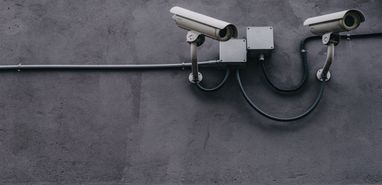
As the emphasis on workplace wellness continues to rise among numerous organizations, the importance of technologies such as Closed Circuit TV (CCTV) monitoring is increasingly evident. When implemented proficiently, this surveillance mechanism can nurture a culture of safety, discourage undesirable conduct, and facilitate prompt responses during emergencies. Nonetheless, it also brings forth valid apprehensions regarding privacy and misuse. This article endeavors to explore these facets, presenting a well-rounded perspective to stimulate reflective dialogue among peers in the industry.
A Glimpse at the Professionals
The argument for CCTV monitoring in the workplace is often a compelling one, reinforced by its contribution to fostering a secure environment.
Discouragement and Anticipation
CCTV cameras have the potential to markedly discourage crimes such as robbery, vandalism, bullying, and harassment in the workplace. The mere knowledge that activities are being recorded can serve as a potent deterrent.
Action during Crises
When crises or incidents occur, CCTV coverage can support rapid response and effective action. The ability to identify what is happening and the individuals involved in real-time can expedite the resolution of the issue.
Responsibility and Transparency
With a proficient CCTV system, apprehensions regarding employee accountability can be efficiently addressed. It cultivates an atmosphere of transparency and objectivity, thus diminishing the likelihood of bias and discrimination.
Resolving Questions
Conflicts and disputes are inevitable in organizations. Here, CCTV can play a crucial role in providing evidence to assess the situation and make informed decisions.
Addressing the Cons
Despite its evident benefits, CCTV monitoring can have drawbacks that need to be addressed proactively.
Invasion of Privacy
Continuous surveillance can lead to feelings of unease and invasion of privacy among employees, potentially impacting morale and productivity.
Abuse of Footage
There’s also the risk of misuse of surveillance footage, which could lead to issues such as extortion or reputational damage.
Possibility of Misleading Security
CCTV can occasionally nurture a false sense of security. Merely having cameras in place does not assure the absence of misconduct.
Finding a Balance
Ultimately, the decision to implement CCTV in the workplace should not be taken lightly. Companies should strive to balance the safety benefits with the potential implications on security and trust.
Developing Clear Strategies
Primarily, organizations require clear, succinct policies concerning CCTV usage in the workplace. These policies should elucidate the justification for installing cameras, specify the exact locations where surveillance will be operational, and establish the protocols for data use and storage. Having such a policy in place not only furnishes a valuable reference point for all stakeholders but also mitigates misuse and potential legal challenges in the future.
Open Dialogue with Employees
Implementing a change that impacts daily work life should always involve the participation of employees. It’s therefore essential to engage in an open dialogue with employees regarding the introduction of CCTV monitoring. Understand their concerns, outline the procedures, answer questions, and most importantly, reassure them that their privacy will not be compromised. This collaborative approach will help alleviate fears, address concerns, and secure meaningful buy-in from the workforce.
Regular Surveys and Reviews
Implementing CCTV is not a one-time fix. It necessitates ongoing monitoring to ensure it’s serving its intended purpose and not being misused. Regular evaluations can assist in assessing the efficiency of the surveillance system, detecting any irregularities, and implementing necessary adjustments. This proactive strategy will ensure CCTV remains a valuable asset for workplace safety and security.
Conclusion
Fundamentally, CCTV monitoring possesses the capability to substantially bolster workplace security, granted that concerns regarding privacy and potential misuse are adequately tackled. With the appropriate equilibrium, explicit directives, and proactive communication, organizations can cultivate a secure workplace atmosphere that upholds individual privacy while advocating for transparency, accountability, and ethical conduct in the workplace.


By Andrej Kovacevic
Updated on 14th July 2024